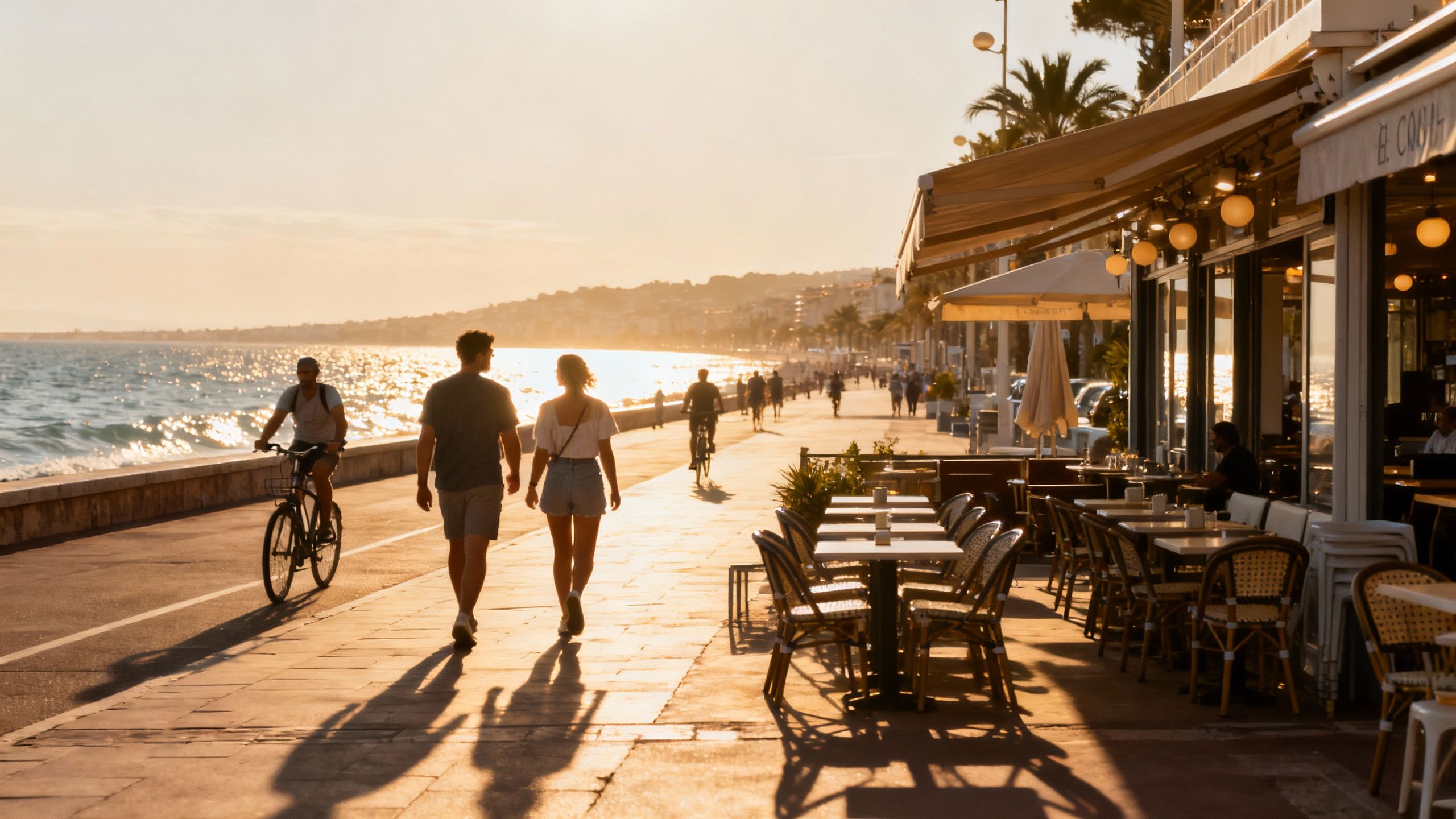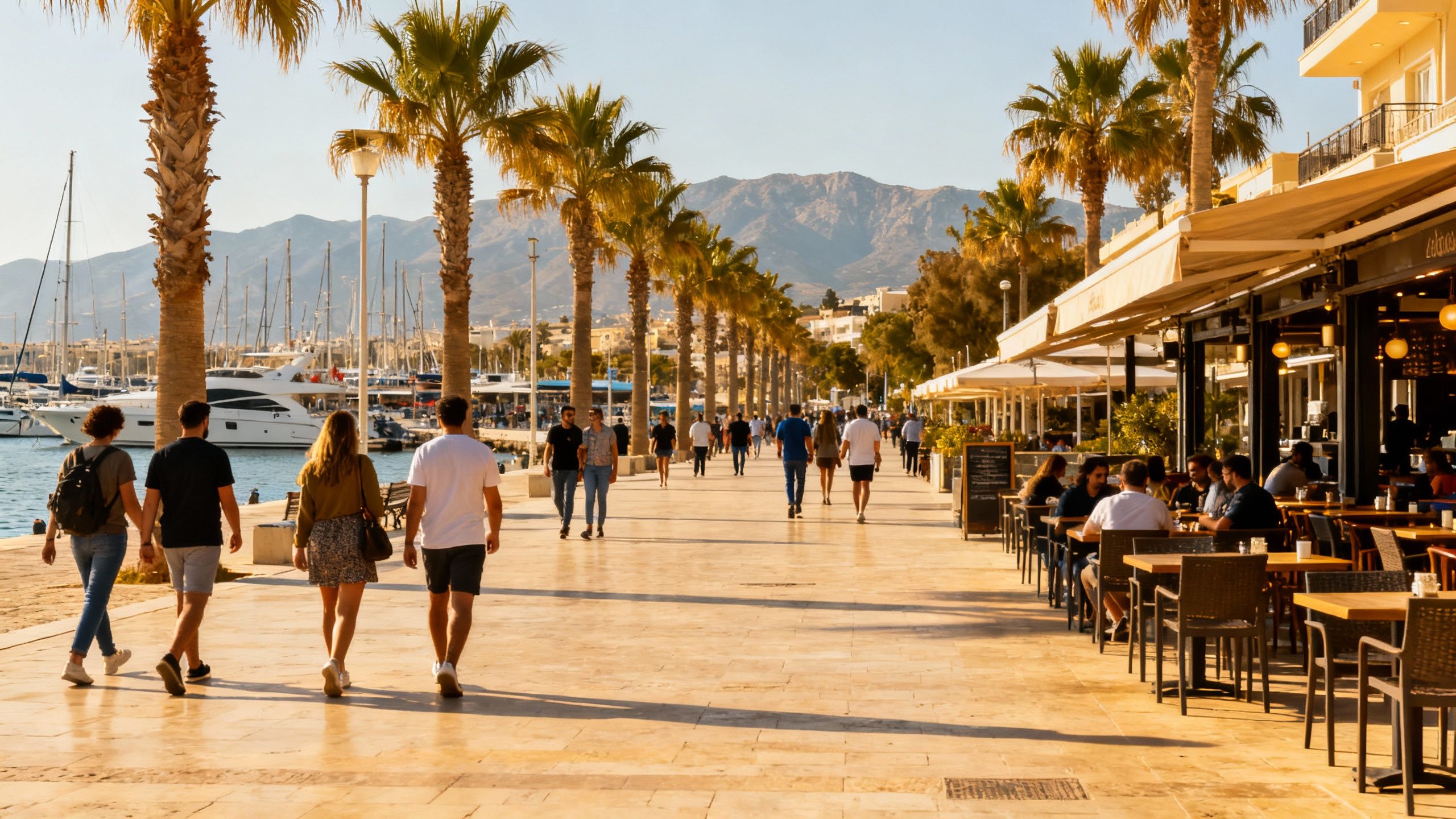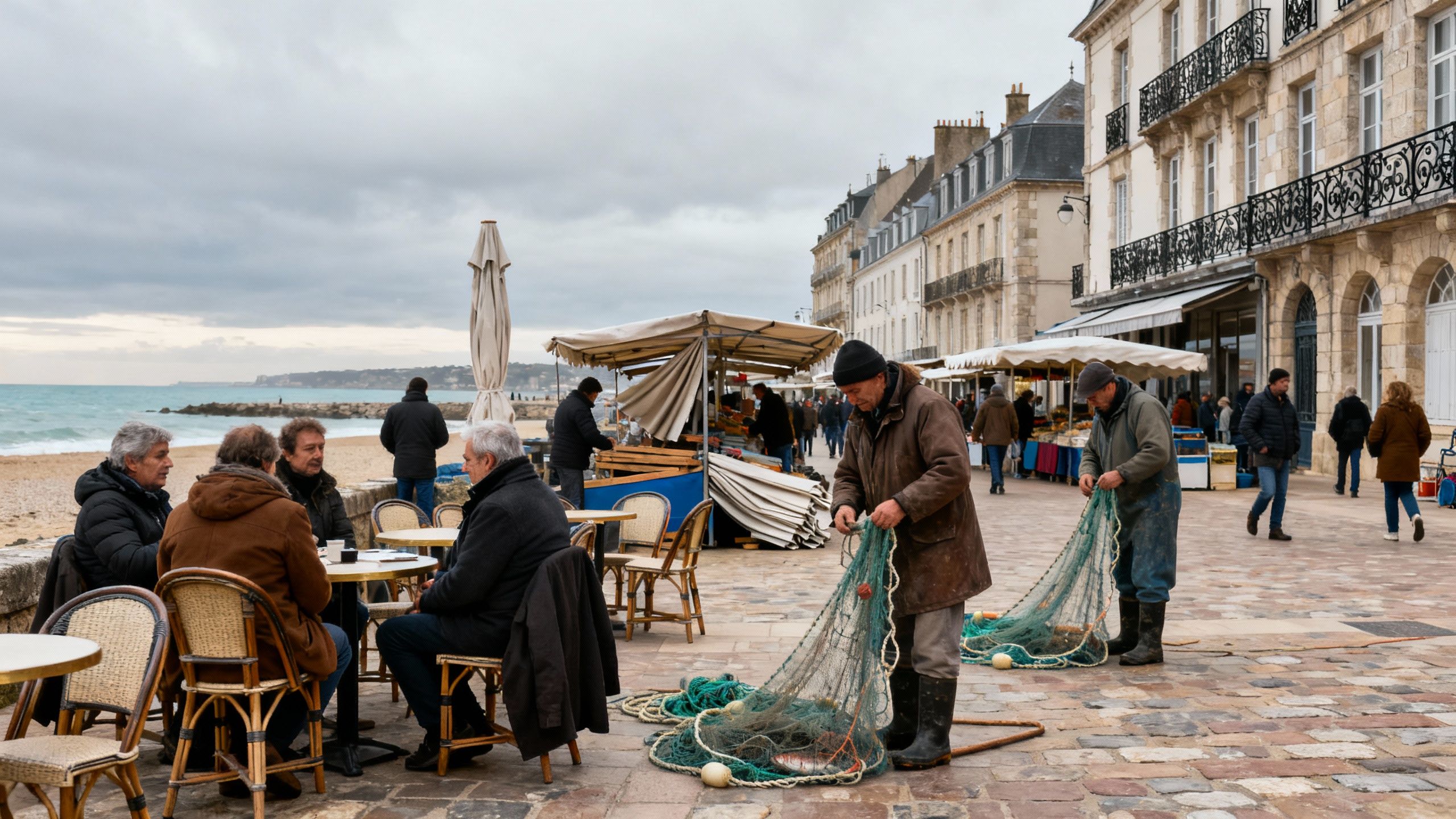Riviera or Costa del Sol? Unexpected lifestyle trade‑offs
France’s Riviera offers a different daily rhythm to the Costa del Sol—use lifestyle priorities and 2025 market data to choose the coastline that fits how you want to live.
Imagine a morning espresso on Nice’s Promenade des Anglais, then a late afternoon paseo along Marbella’s old town — two coastlines, two rhythms. France’s Riviera feels like an extended city boulevard: cafés, galleries and short, cool sea breezes. The Costa del Sol moves slower and sunnier—neighborhoods stitch together beaches, golf courses and whitewashed pueblos. For international buyers the question isn’t simply price; it’s: which daily rhythm do you want, and how does that rhythm affect what you should buy?
Living the French Riviera Life (and how it differs from the Costa del Sol)
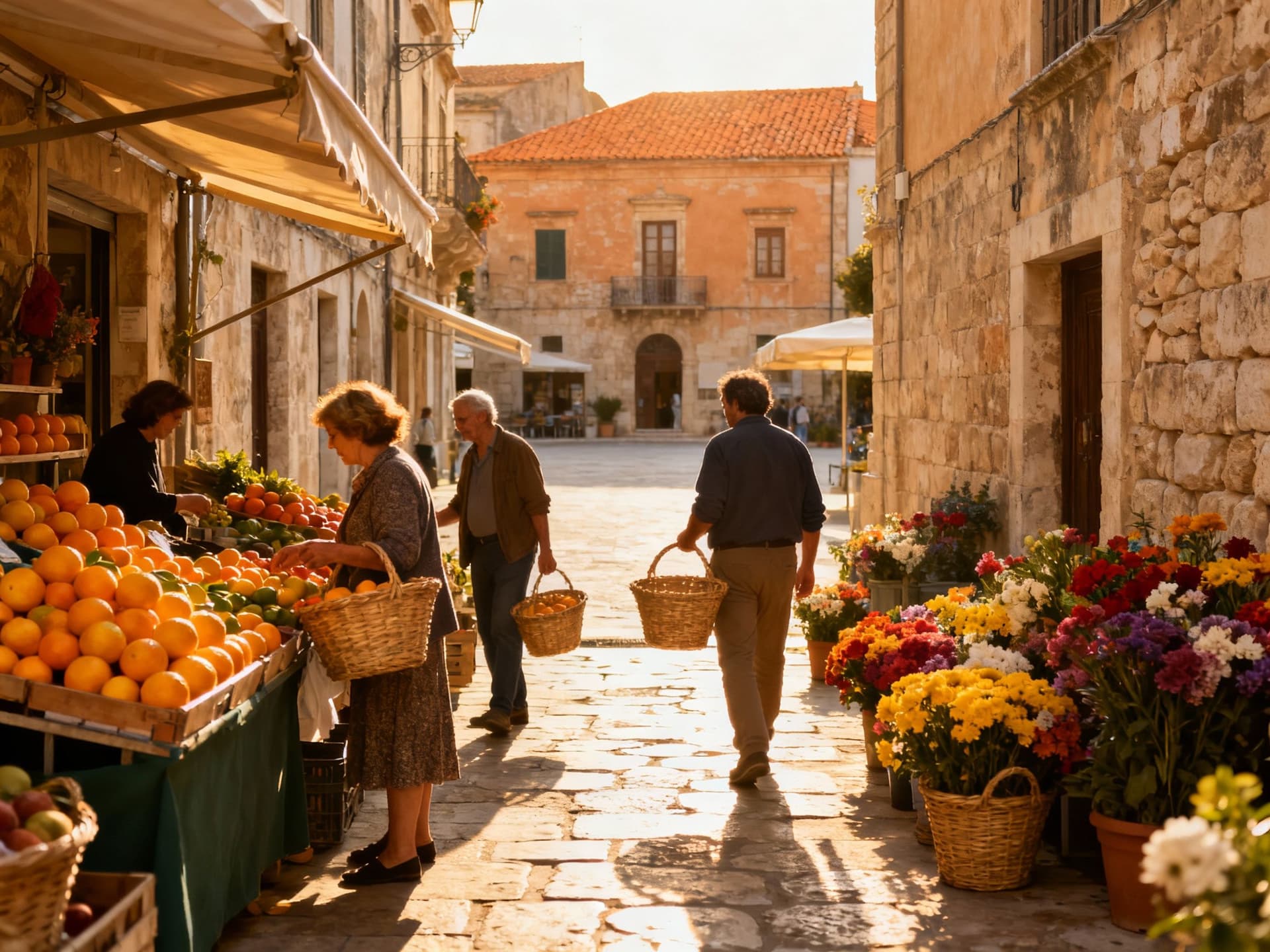
Living on the French coast is a choreography of small rituals: morning markets, a late lunch, and aperitif hours that drift into light dinners. Cities such as Nice, Cannes and Antibes mix Belle Époque facades with contemporary apartments; inland villages like Èze and Mougins offer stone houses and terraced gardens. France’s market has been nudging back to life—national prices rose slightly in early 2025—so buyers should expect both lifestyle premiums and pockets of opportunity away from headline Riviera towns.
Neighborhood focus: Nice, Vieux-Nice to Cimiez
Vieux-Nice hums with market stalls and narrow lanes—small apartments here suit buyers who want immersion in daily French life. Move inland to Cimiez and you find quieter streets, villas with gardens, and more space for the same breath of Riviera light. INSEE data shows modest price recovery nationally in early 2025, but local micro-markets vary: central Nice commands higher per-square-metre premiums than nearby inland areas, where value and calm coexist.
Food, festivals and a year-round cultural calendar
Think weekly marchés—Cimiez’s market, Cannes’ film-season buzz, street jazz in Antibes and village fêtes that fill the summer. These cultural rhythms shape property life: apartments near markets trade convenience for noise; villas outside town buy you tranquillity but mean longer drives to cultural life. If festivals and cafés matter, prioritise short walking commutes; if calm and outdoor living matter, coastal hamlets and hilltop villages are better fits.
- Lifestyle highlights (France — Riviera): Marché Saleya (Nice); Cannes Film and yacht scene; Antibes’ Picasso museum; Èze botanical hill walks; coastal train rides between towns; Provençal village markets.
Making the Move: Practical Considerations That Preserve Lifestyle
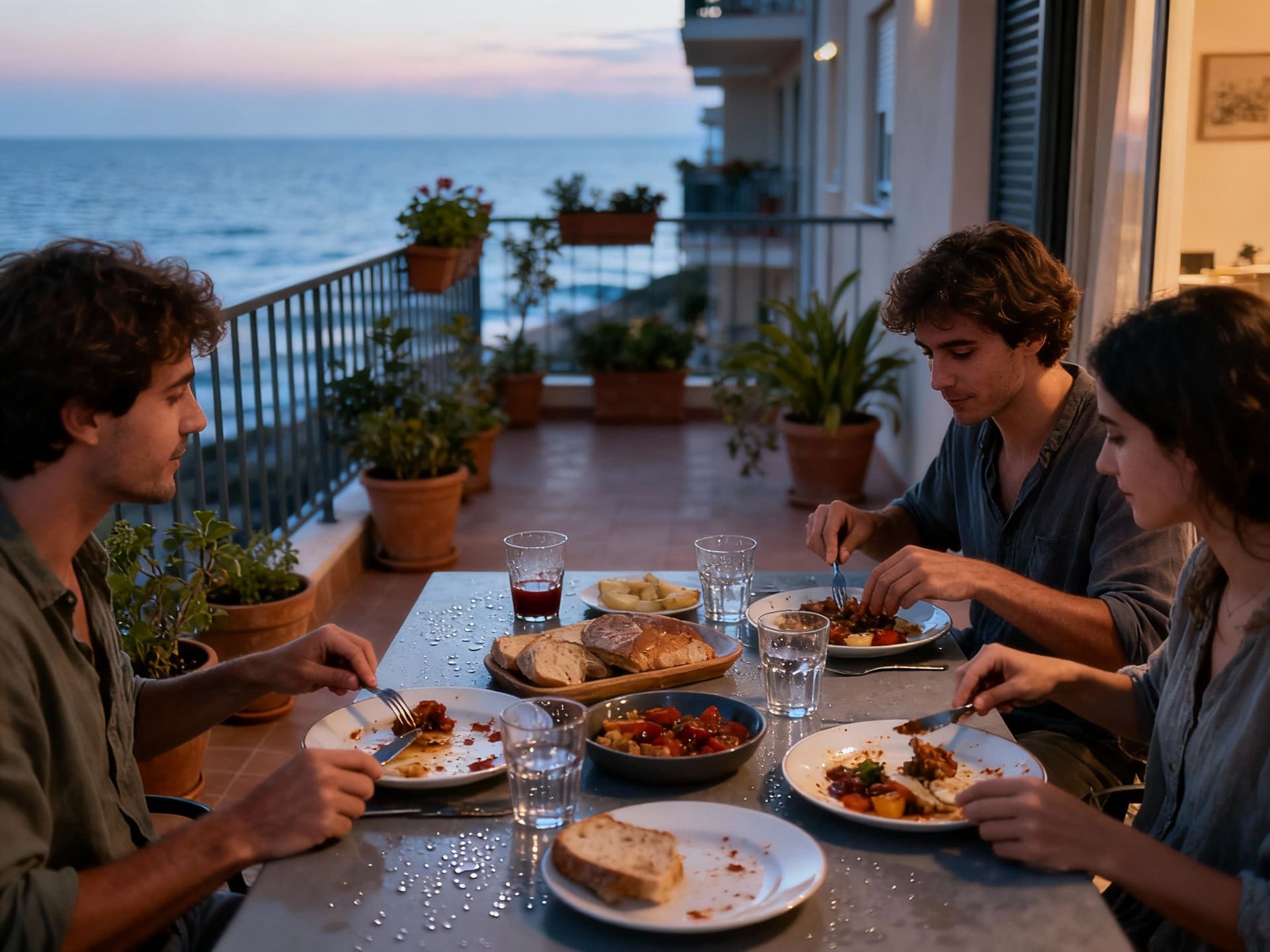
Dreams meet contracts. On the Riviera you trade proximity to cultural hubs and gastronomy for higher per-square-metre premiums in Nice and Cannes; on the Costa del Sol you often pay more for sun and outdoor living (Marbella recorded very high prices in 2025), but you can still find relatively affordable pockets in smaller coastal towns. Use market data to set realistic expectations: recent reports show the Costa del Sol hitting record asking prices, while France’s national indices indicate a gentler recovery—both realities affect negotiation room and expected rental demand.
Property styles and how you’ll actually live in them
Riviera apartments: compact, well-insulated, often with shared building regulations that favour short-term rentals in certain zones. Coastal French villas: older stone constructions needing renovation but offering gardens and shade. Costa del Sol developments: new-build complexes with pools, terraces designed for outdoor living. Choose by daily routine: if you want café culture and a short walk to galleries, an apartment in town; if poolside afternoons and an open-plan terrace matter, a Costa del Sol development or Riviera villa with gardens.
Working with local experts who preserve lifestyle intent
- 1. Brief a bilingual agent on lifestyle priorities—not just budget. 2. Ask for neighborhood day-schedules: morning market days, noise patterns, and peak tourist months. 3. Request recent utility and condominium fees to avoid surprises. 4. Visit at different times of year (market-season and off-season) before bidding. 5. Have a local architect or surveyor ready for older Riviera homes; ask for energy performance certificates for all properties.
Insider Knowledge: What Expats Wish They’d Known
Expat buyers often report two surprises: seasonality’s social impact, and the implied maintenance of older properties. The Riviera’s cultural calendar keeps life lively outside high summer, but winter slowdowns change neighbourhood economies—restaurants close and commutes feel emptier. In mountain or resort zones, luxury conversions have raised per-metre prices steeply, changing the fabric of small towns and pressuring local services.
Cultural integration, language and daily routine
Learn a few phrases and attend local marchés and fêtes—this accelerates integration more than any glossy brochure. Practicalities matter too: local bureaucracy moves at French pace, and seasonal hiring patterns affect property services like gardening or pool maintenance. INSEE data shows France’s housing market stabilising in early 2025; for buyers, that means planning beyond a single-season visit and budgeting for maintenance in older Riviera stock.
Longer-term lifestyle and investment realism
If rental income is part of the plan, the Costa del Sol’s year-round holiday demand can outperform certain Riviera towns outside peak festival months—but headline asking prices in Marbella rose strongly into 2025. For long-term residents, France’s cultural infrastructure and healthcare balance lifestyle with stability; for owners seeking outdoor-first life and new developments, Spain’s coastal pipeline offers modern amenities. Match your buy to whether you prioritise cashflow, lifestyle convenience or long-term capital preservation.
- Red flags and quick checks before you bid: ask for building co-ownership rules and fees; check local tourist zoning restrictions; confirm recent seismic/soil surveys for hillside villas; request recent energy performance (DPE) and insurance claims history; compare seasonal noise and traffic patterns.
Picture yourself six months after moving: weekend marché trips, a circle of local friends, reliable services, and a property that matches daily life—not merely an image. Whether the Riviera’s café-lined boulevards or the Costa del Sol’s sunlit terraces feel like home depends on small, repeatable moments. Use data to set expectations, local experts to translate lifestyle into property features, and multiple visits to choose streets where your life will actually take place.
Next steps: pick two neighbourhoods—one inland, one coastal—schedule off-season and peak-season visits, and ask agents for a day-in-the-life brief of each street. If you’d like, Blueprintera can compare recent listings, local fees and on-the-ground agency expertise so your choice is both an inspired lifestyle and a sound property decision.
Dutch investment strategist with a Portugal-Spain portfolio. Expert in cross-border financing, rights, and streamlined due diligence for international buyers.
